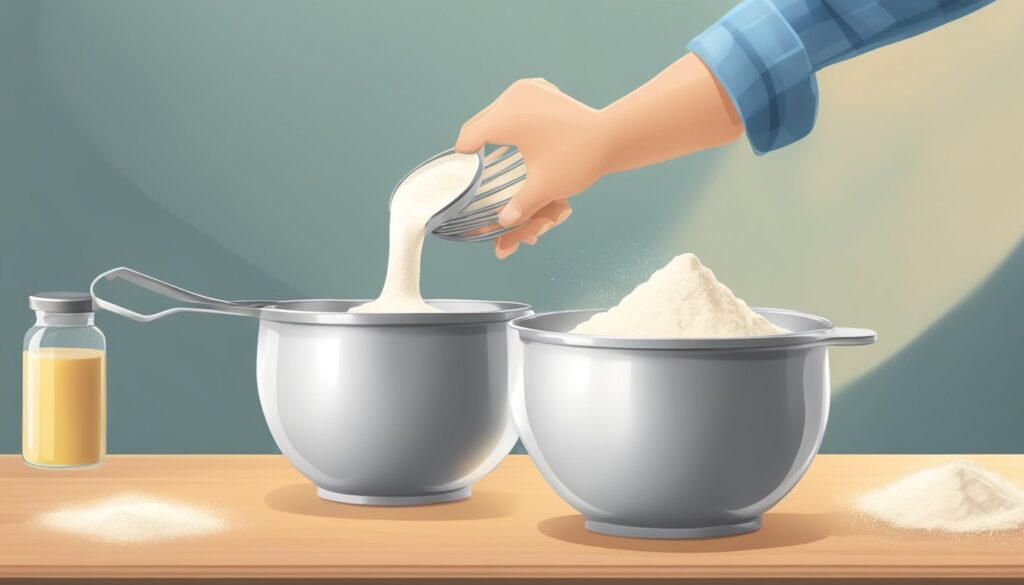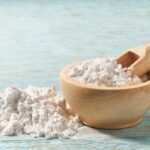Baking can be an art, but for many of us, it’s also a way to express creativity and make delicious treats at home. However, sometimes baking can feel complicated, especially when recipes require a precise combination of ingredients like all-purpose flour, baking powder, and salt. That’s where self rising flour comes in—an all-in-one solution that simplifies your baking experience. Whether you’re a novice baker or a seasoned pro, self-rising flour is a convenient ingredient that can save time and reduce the need for multiple pantry staples. But what exactly is self-rising flour, and how can you use it? Let’s dive in!
What is Self-Rising Flour?
Self rising flour is a type of flour that’s pre-mixed with leavening agents—specifically baking powder and salt. Unlike regular all-purpose flour, which needs additional ingredients to make baked goods rise (like baking soda, baking powder, or yeast), self-rising flour is ready to go straight from the bag.
The typical composition of self-rising flour includes:
- All-purpose flour: This serves as the base, providing the structure needed for your baked goods.
- Baking powder: A leavening agent that helps the dough or batter rise when exposed to heat.
- Salt: It enhances flavor and balances the other ingredients.
How Does Self-Rising Flour Work?
The main appeal of self-rising flour is its built-in leavening power. Baking powder contains both an acid and an alkali, which react when they come in contact with moisture and heat, producing carbon dioxide gas. This gas forms bubbles in the dough or batter, causing it to rise and become light and fluffy.
Because it contains salt, self-rising flour also has a slight savory undertone. This makes it ideal for recipes that call for a bit of seasoning, like biscuits or cornbread. However, it can also work well in sweet recipes, as long as the overall flavor balance is adjusted to your liking.
What Can You Make with Self-Rising Flour?
Self-rising flour is incredibly versatile, and there’s no shortage of baked goods you can create using it. Some common recipes that often use self-rising flour include:
- Biscuits: The fluffiness of biscuits is largely due to the leavening action in self-rising flour. They rise beautifully without needing any additional baking powder or soda.
- Pancakes and Waffles: Self-rising flour can yield light, airy pancakes and waffles with minimal effort.
- Muffins: Quick, easy, and delicious, muffins made with self-rising flour come together in a snap.
- Cakes: While traditional cake recipes usually require a careful combination of dry ingredients and leavening agents, self-rising flour makes the process a lot simpler.
- Scones: Whether you prefer sweet or savory scones, self-rising flour helps achieve that tender, crumbly texture we all love.
- Flatbreads and Pizza Dough: You can make quick flatbreads or pizza dough by substituting self-rising flour for regular flour.
How to Substitute Self-Rising Flour in a Recipe
If you don’t have self-rising flour on hand, you can easily make your own by adding baking powder and salt to all-purpose flour. For every 1 cup of all-purpose flour, add 1 1/2 teaspoons of baking powder and 1/4 teaspoon of salt. Mix them together thoroughly, and you’ve got a homemade substitute for self-rising flour.
When to Use Self-Rising Flour
Self-rising flour is perfect for recipes that are meant to be quick and easy. It’s especially useful in “quick bread” recipes, where you’re not relying on yeast to rise the dough. If a recipe specifically calls for self-rising flour, using all-purpose flour instead could throw off the texture and rise of the finished product.
However, self-rising flour should not be used in recipes that already call for baking powder or other leavening agents, unless the amounts are adjusted accordingly. Because self-rising flour already contains leavening agents, adding more could result in an overly risen or even collapsed product.
Key Benefits of Using Self-Rising Flour
- Saves Time: With the leavening agents already mixed in, self-rising flour eliminates an extra step in your baking process. It’s perfect for when you’re in a rush but still want to make something homemade.
- Reduces Clutter: Self-rising flour is ideal for people who don’t want to clutter their pantry with multiple types of flour or leavening agents. Just one bag, and you’re good to go.
- Consistency: The ratio of flour to baking powder and salt in self-rising flour is carefully calibrated, which helps ensure consistent results. You don’t have to worry about measuring out the exact amounts of leavening agents each time.
- Versatility: As mentioned, self-rising flour can be used in a wide variety of baked goods—from savory biscuits to sweet cakes. It’s a great all-purpose option to keep in your kitchen.
Things to Keep in Mind
- Storage: Like all flours, self-rising flour should be stored in an airtight container to maintain its freshness and avoid moisture. It’s best used within 6-8 months of purchase, as the baking powder in it can lose its potency over time.
- Salt Sensitivity: Because self-rising flour contains salt, be cautious when using it in recipes where you want to control the amount of salt. If the recipe already calls for salt, you may need to adjust the quantity accordingly.
- Not for Yeast-Based Recipes: Self-rising flour is not a good substitute for recipes that require yeast. Yeast requires a completely different leavening process, so don’t use self-rising flour for things like bread or pizza dough unless the recipe is explicitly designed for it.
Conclusion
Self-rising flour is a true convenience in the kitchen, offering a quick and easy solution for a variety of baked goods. With its built-in leavening agents and salt, it streamlines the baking process and ensures your treats turn out light, fluffy, and perfectly risen. So the next time you’re baking, consider keeping a bag of self-rising flour on hand—it might just become your new go-to ingredient for quick breads, cakes, muffins, and more!




